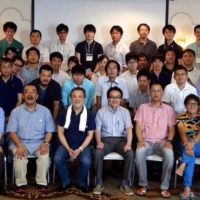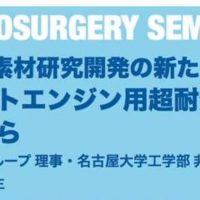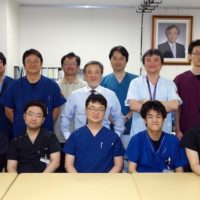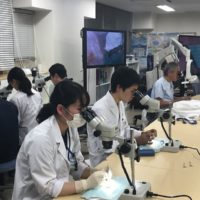
もやもや病に対する脳血行再建術として、1997年に当科の黒田が考案したSTA-MCAバイパス+EDMAPS術の5〜20年(平均10.5年)にわたる長期成績がJournal of Neurosurgery誌に掲載されました。
術後5年以上を経過した93例(小児35例、成人58例)のうち、経過観察中に脳卒中の再発をきたした症例は1例のみで、その再発リスクは年間0.1%でした。中大脳動脈領域のみならず、前大脳動脈領域の脳循環動態も著しく改善する本術式は、長期成績も良好であることが確認できました。
また、術後0.5〜15年後に15例19側(年間1.5%)で反対側頚動脈あるいは後大脳動脈に病期の進行が認められており、術後も長期にわたって注意深く経過観察すべきであることも判明しました。既報でも報告している通り、こういった症例に対してはいずれの領域であれ、repeat bypassがきわめて有効です。
A Voyage to Depth of Neuroscience Vol. 70
Late (5-20 years) outcomes after STA-MCA anastomosis and encephalo-duro-myo-arterio-pericranial synangiosis in patients with moyamoya disease.
Kuroda S, Nakayama N, Yamamoto S, Kashiwazaki D, Uchino H, Saito H, Hori E, Akioka N, Kuwayama N, Houkin K.
J Neurosurg. 2020 Mar 13:1-8. [Epub ahead of print]
Abstract
OBJECTIVE:
Surgical revascularization is known to reduce the incidence of further ischemic and hemorrhagic events in patients with moyamoya disease, but the majority of previous studies report only short-term (< 5 years) outcomes. Therefore, in this study the authors aimed to evaluate late (5-20 years) outcomes of moyamoya patients after superficial temporal artery to middle cerebral artery (STA-MCA) anastomosis and indirect bypass (encephalo-duro-myo-arterio-pericranial synangiosis [EDMAPS]).
METHODS:
Cumulative incidences of late morbidity/mortality and disease progression were evaluated among 93 patients who underwent STA-MCA anastomosis and EDMAPS. All of the patients were prospectively followed up for longer than 5 years postsurgery (10.5 ± 4.4 years). There were 35 pediatric and 58 adult patients. Initial presentation included transient ischemic attack/ischemic stroke in 80 patients and hemorrhagic stroke in 10 patients, and 3 patients were asymptomatic. Surgery was performed in a total of 141 hemispheres. Follow-up MRI/MRA was performed within a 6- or 12-month interval during the follow-up periods.
RESULTS:
During the follow-up periods, 92/93 patients were free from any stroke or death, but 1 patient had a recurrence of hemorrhagic stroke (0.10% per patient-year). Disease progression occurred in the territory of the contralateral carotid or posterior cerebral artery (PCA) in 19 hemispheres of 15 patients (1.5% per patient-year). The interval between initial surgery and disease progression varied widely, from 0.5 to 15 years. Repeat bypass surgery for the anterior and posterior circulation resolved ischemic attacks in all 10 patients.
CONCLUSIONS:
The study results indicate that STA-MCA anastomosis and EDMAPS would be the best choice to prevent further ischemic and hemorrhagic stroke for longer than 10 years on the basis of the demonstrated widespread improvement in cerebral hemodynamics in both the MCA and ACA territories in the study patients. However, after 10 years postsurgery regular follow-up is essential to detect disease progression in the territory of the contralateral carotid artery and PCA and prevent late cerebrovascular events.









